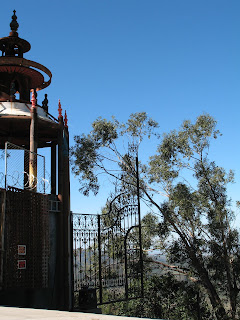The Garden of the Hesperides
Photo © Copyright Alice Joyce
Valencia offers garden travelers and aficionados of modern landscape architecture a trove of settings to fill their days. Strolling away from the city center along Calle de Quart, you'll pass through the ancient towers on the way to the botanical gardens, appearing on your right. Across the street from the gardens, I booked a room at Chill Art Hotel Jardin Botanico.
Do leave a comment, telling me what you think of the hotel's web site design; evoking a dreamy delirium, or perhaps some other mood entirely:
http://www.hoteljardinbotanico.com
The El Carmen neighborhood is an artistic hub; a place to enjoy a bite to eat in a small cafe frequented by Valencians. My time in Valencia was coming to an end when I experienced an exhilarating finale to my exploration of Spain's third largest city. That's when I discovered The Garden of the Hesperides, adjacent to the University's Jardi Botanic, but tucked away on Gaspar Bono street.
The Hesperides helps to define the sophistication and spirit of Valencia in the new Millennium, with its refreshingly modern landscape design: A layout animated by the historical significance of its Mediterranean plantings, water features, and sculptural focal point.
Garden Design: M.T. Santamaria, A.Gallud, M. Del Rey, C. Campos
Enter the confines of this walled retreat and you escape from the nonstop traffic of a nearby thoroughfare. Two concrete gates swivel into a locked or unlocked position; the material given textural treatments that set polished surfaces against raw sections. Inlaid with linear strips of black and cream-colored marble, the gates have a presence that calls to mind vast canvases in an art galley. Underfoot, the walkway contains subtle leaf patterns suggestive of fossil remains.
The landscape's bold geometry caters to botanically inclined visitors with a composition incorporating rows of fragrant lavender and germander shrubs, bisected by walls of emerald green foliage interspersed with palm trees.
Exhuberant bougainvillea clad pergolas provide a shady respite, while an espalier of 'Toscana' lemons basks in the sun. Water gently flows within the angular outlines of a rill, the channel dipping beneath the ground, and ultimately finding its way into a rectangular pond.
On the expansive terraces, a lovely Salix babylonica weeps, in alliance with 'Metamorfosis' ...a sculpture by Miklos A. Palfy.


























.jpg)












